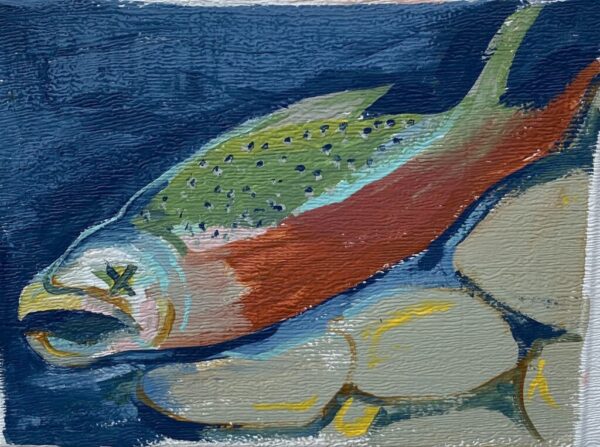10 Fun Facts

#1
Salmon display silvery colors at sea and vivid reds, greens, browns, and even purple in freshwater. These freshwater colors may become even more pronounced in males during mating or fighting rituals.

#2
Young salmon moving to sea travel at night to avoid predators. They also drift backwards facing upstream which may allow them to continue feeding and also may provide better control in the downstream current.

#3
Salmon in their saltwater phase travel an estimated 18 miles a day, but they are capable of maintaining an average of 34 miles per day over long distances. Salmon often travel much more slowly to feed.

#4
Humans have given many nicknames to salmon. Chum salmon are often called “dogs” because of the large canine teeth they develop during spawning. They are also called “calicos” because of their bright spawning colors. Spawning pink males develop a large humped back and are called “humpies.”

#5
Salmon do not have ears. Instead they hear low frequency sound waves which vibrate through the water to a row of sensory pores, called lateral lines, on the sides of the salmon. Scientists believe lateral lines also may help salmon navigate in the ocean.

#6
Salmon need cold, clean, well oxygenated water. Even salmon raised in hatcheries spend some portion of their lives in a river or stream. Without healthy watersheds, salmon cannot survive.

#7
Like many fish, salmon have 300 degree vision. It is only the area immediately behind them that they cannot see.

#8
Salmon have an extremely keen sense of smell. Studies indicate that salmon can smell one part per million which translates to one drop in 250 gallons, hundreds of times more acute than that of dogs.

#9
Only 2 (10%) of the eggs deposited in a gravel nest will survive to return to the spawning grounds as adults.

#10
The oldest verified fossil for a freshwater version of the salmon is 50 million years old. Five to six million years ago salmon had fangs, weighed 500 pounds, and were ten feet long. The modern anadromous Pacific salmon emerged about two million years ago in the cold mountain streams of the Pacific Northwest.
Images from the hatchery’s spawning shed doors, painted by 48 community members in 2023.
